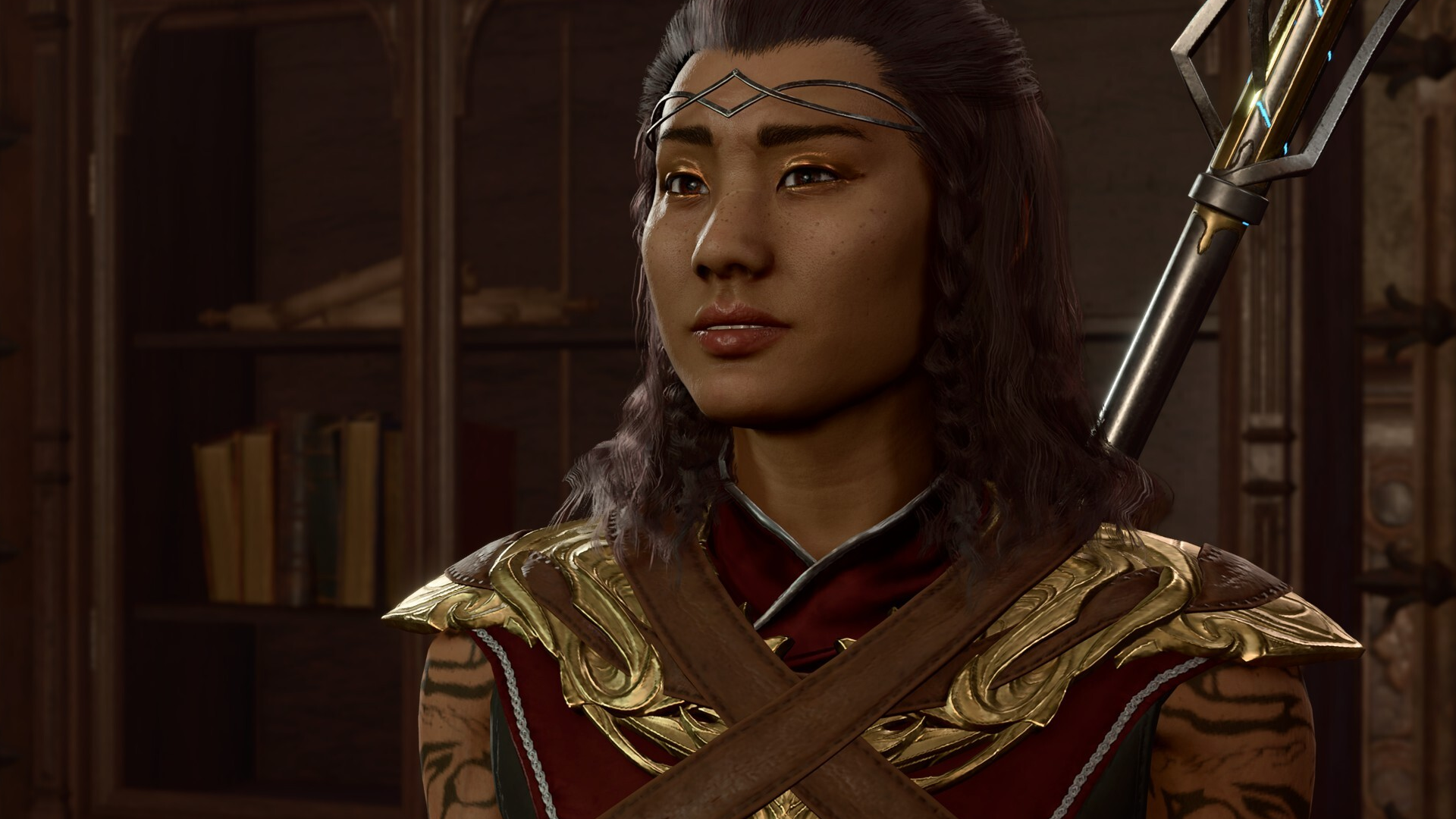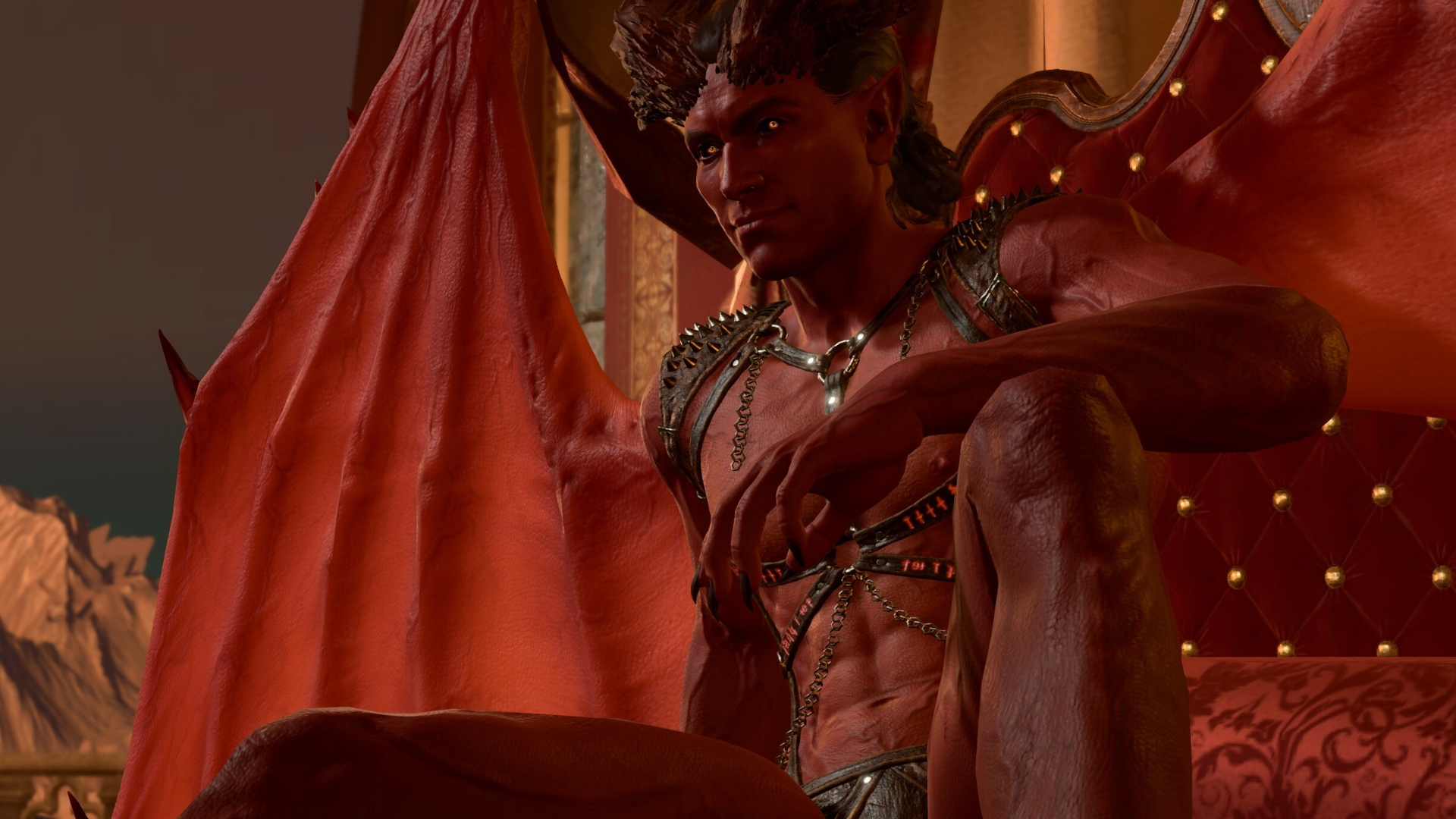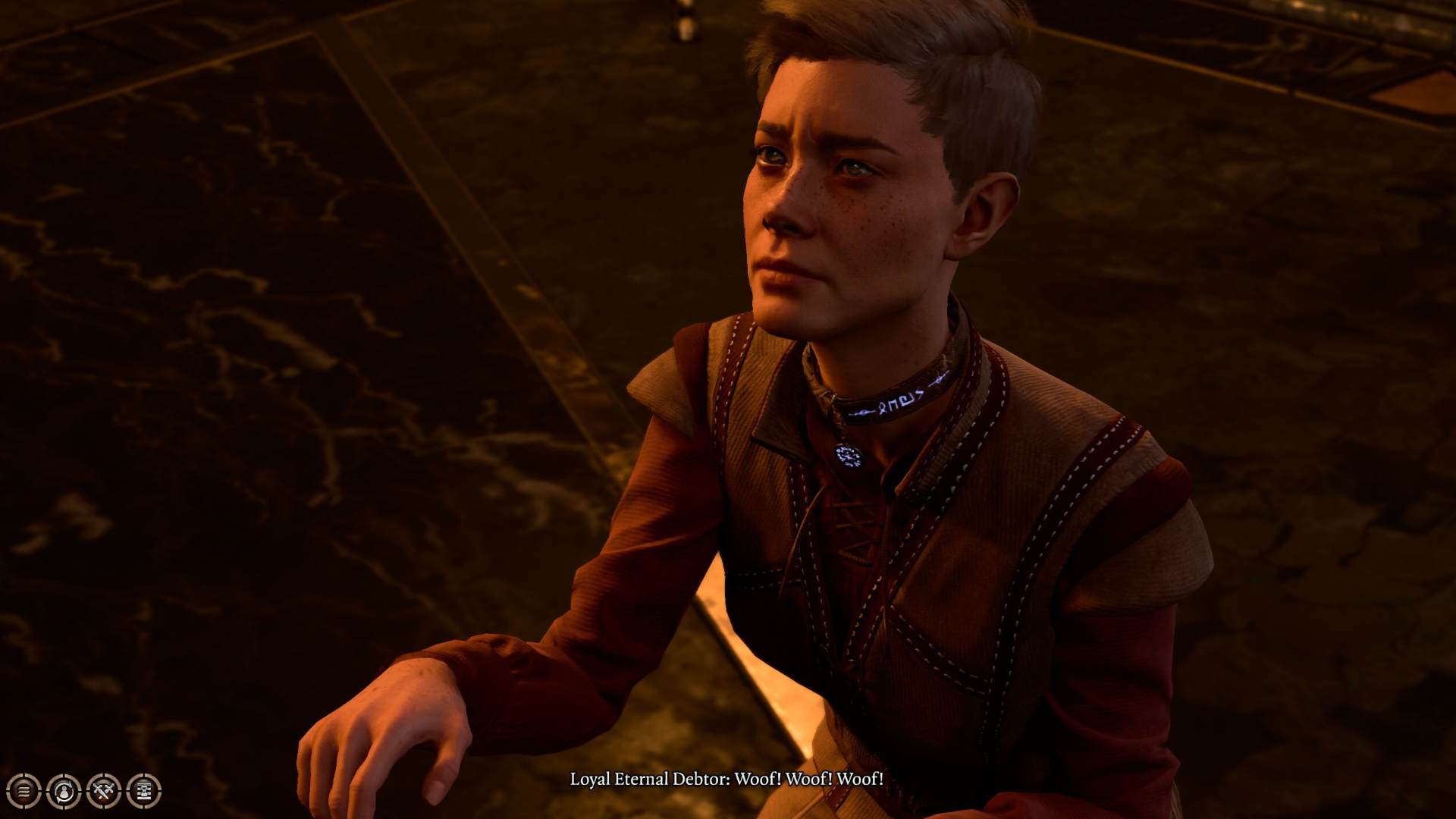The best dungeon in Act 3 of Baldur's Gate 3 is entirely optional
Make sure to visit an old 'friend' before you wrap up your playthrough.

The city of Baldur's Gate in Baldur's Gate 3 acts as a big hub area for several high-stakes dungeons and boss fights. They're all gnarly encounters that put your end-game builds to the test, and for the most part, they're all a complete blast. I could ramble on about all of them—The Iron Throne, Cazador's Palace, the Bhaalist Temple—but my favourite by far is completely, 100% optional, and easy to miss entirely unless you're looking for a specific item.
I'm talking about the House of Hope. This dungeon opens up to you if you refuse Raphael's shady offer to give you the Orphic Hammer, and I'm about to sing its praises. If you'd like to go in completely fresh, all you need to know is that you've got to talk to the merchant at the Devil's Fee. You can also click the link above for a full step-by-step guide.
Before I get into full-tilt spoiler territory, I should note that doing the House of Hope doesn't (from what I can tell) lock you out of any major story choices, unless you're really keen on making a deal with Raphael and giving him the Absolute's crown. Even if you're not interested in the Orphic Hammer, it's also worth doing for several powerful magical items—plus a potential ally for the final battle.
Go to hell

The Nine Hells in Dungeons & Dragons are absolutely horrible. To give you an idea of just how horrible—do you know what a Lemure is? It's a massive, stinking lump of flesh made from the souls of the damned, sitting at the bottom of the infernal food chain. If you've led a sinful life on the Sword Coast and don't get in good with a devil, it's likely you'll be turned into one when you die. They are in constant pain, barely remember their old lives, and can regenerate from a pile of ash. They're also called 'squidges', which would be cute if their existence wasn't so cursed.
The House of Hope really drives home just how hopeless a life in the Hells is. Raphael, up until this point, has presented a very charming front. Rifling through his home while he's away gives you a glimpse behind the silk curtain, and reveals just how right you were to avoid dealing with him. It's haunted by damned souls with some of the creepiest, coolest voice work and writing in the game.
One soul has been made to think they're a dog, another's cursed to be an eternal voyeur—one has been cursed with stomach rats for time immemorial. Larian does not pull the punches on just how evil this dude is. He is a devil, and the only regret he has is that he only has an eternity to torment the souls in his care.
Baldur's Gate 3 guide: Everything you need
Baldur's Gate 3 Soul Coins: Find them all
Baldur's Gate 3 infernal iron: Karlach collectibles
Baldur's Gate 3 owlbear cub: Befriend the bird
Baldur's Gate 3 find Halsin: Where's the bear?
Baldur's Gate 3 defiled temple: Solve the moon puzzle

Just as Baldur's Gate 3 nails several other aspects of the D&D canon—the alien body horror of mind flayers, the space dominion of the gith, the bloody terror of the god of murder Bhaal—the House of Hope is a perfectly executed rendition of a devil's lair. Civilised on the surface, but drowning in torment.
Keep up to date with the most important stories and the best deals, as picked by the PC Gamer team.
Yet there's also—fittingly—a glimmer of hope. I won't go too deep into the details, but Raphael's unbreakable pet might be one of my favourite sidequest characters. She's well-acted, funny, and genuinely charming, single-handedly keeping the dungeon from feeling too desolate.
Down comes the claw

Baldur's Gate 3 has a lot of great boss fights, but I genuinely think your brawl with Raphael might be the best marriage of theme, mechanics, and story the game has to offer. Even the game's finale, which I enjoyed greatly, sticks less in my mind.
Claiming the Orphic Hammer causes Raphael's security systems to trigger, and you're forced to scramble to free his last sane prisoner—chased by big, flaming boulders the whole way. Breaking her chains, you make a dead sprint to the exit, only to find the smug infernal bastard waiting for you, launching his ambush when you're right in front of the exit.
It feels like a failstate, like one of those encounters a DM throws at you after two hours of asking "are you sure?" during a heist gone wrong. It's like it's designed to punish you, to teach you a lesson about consequences—Raphael himself has 666 health, there are pillars that buff his damage tremendously, Cambions who can disarm your fighters, and explosive Imps wielding eldritch blasts. Oh, did I mention you can barely use radiant damage? Sorry, Paladins, your gods have no power here.
But this fight also happens when you're at your strongest. By this point in the game, you've just hit one of D&D's biggest power surges, and you're likely equipped with some utterly broken magical items. Surviving this fight and winning feels like cheating, like you've thwarted a dungeon master who was so tired of your shenanigans they threw a deadly encounter at you. It looks impossible, but it's just proof of how far your merry band has come.
Also, I've got to talk about the song. After my fit of nervous laughter looking at Raphael's HP pool, I realised he was singing. The devil you know gets his very own diegetic Disney villain song that plays while you fight him—it's sinister, cheesy, and it elevates the whole thing. You can listen to it now, but then you really should Go to Hell—it's worth every second.

Harvey's history with games started when he first begged his parents for a World of Warcraft subscription aged 12, though he's since been cursed with Final Fantasy 14-brain and a huge crush on G'raha Tia. He made his start as a freelancer, writing for websites like Techradar, The Escapist, Dicebreaker, The Gamer, Into the Spine—and of course, PC Gamer. He'll sink his teeth into anything that looks interesting, though he has a soft spot for RPGs, soulslikes, roguelikes, deckbuilders, MMOs, and weird indie titles. He also plays a shelf load of TTRPGs in his offline time. Don't ask him what his favourite system is, he has too many.


